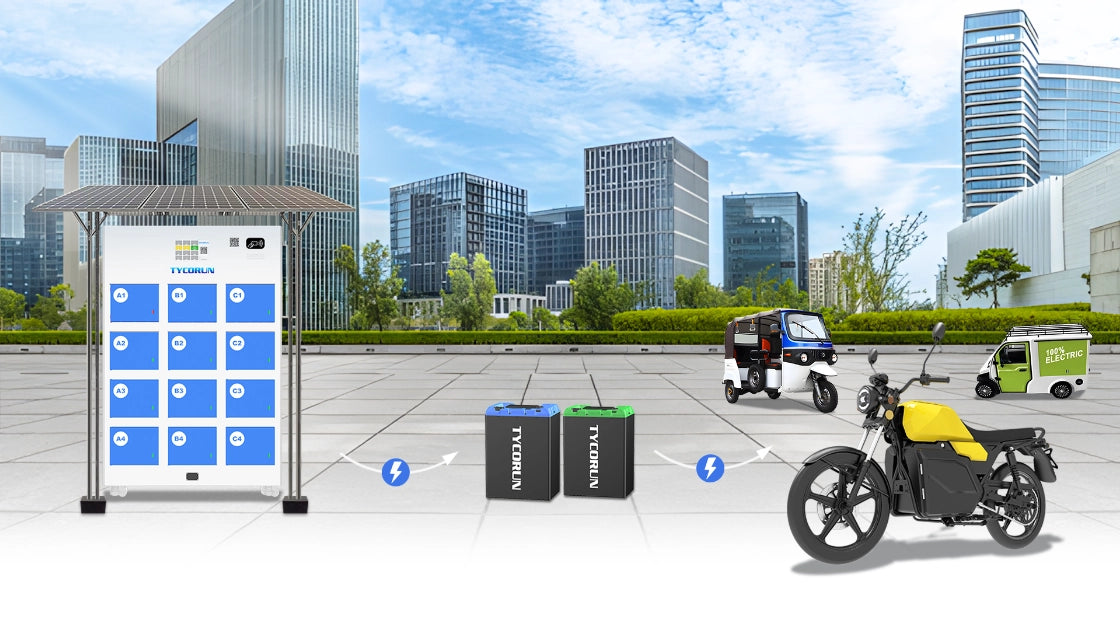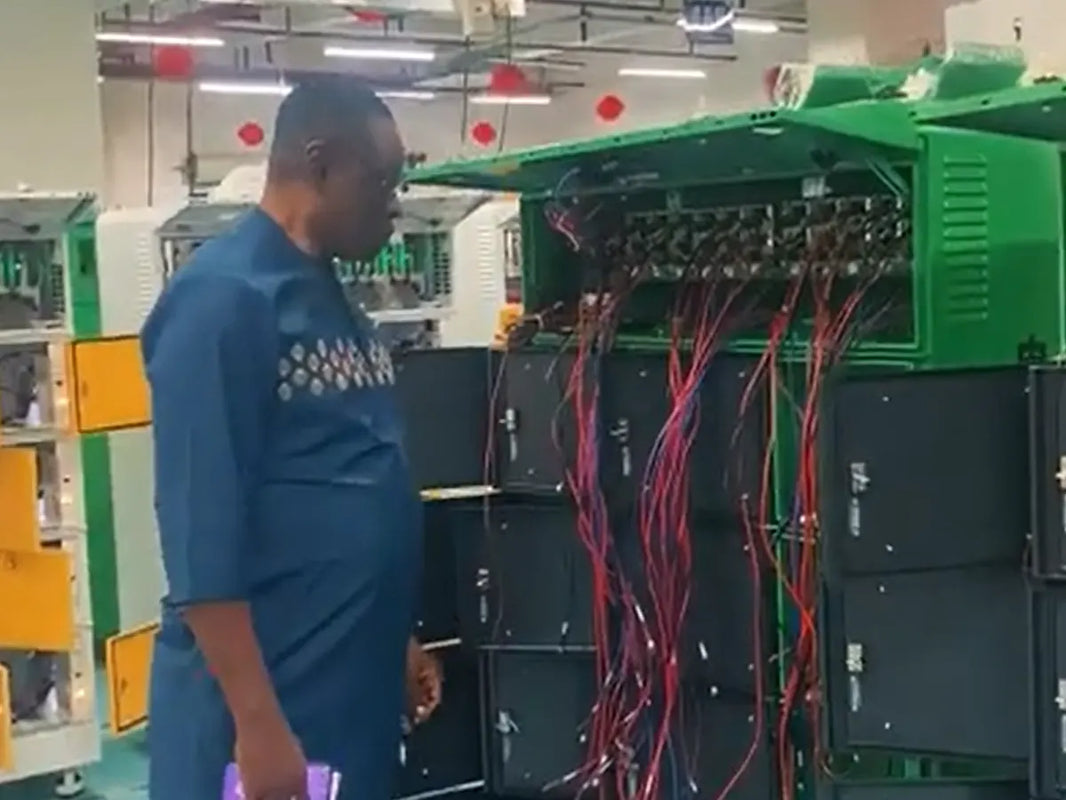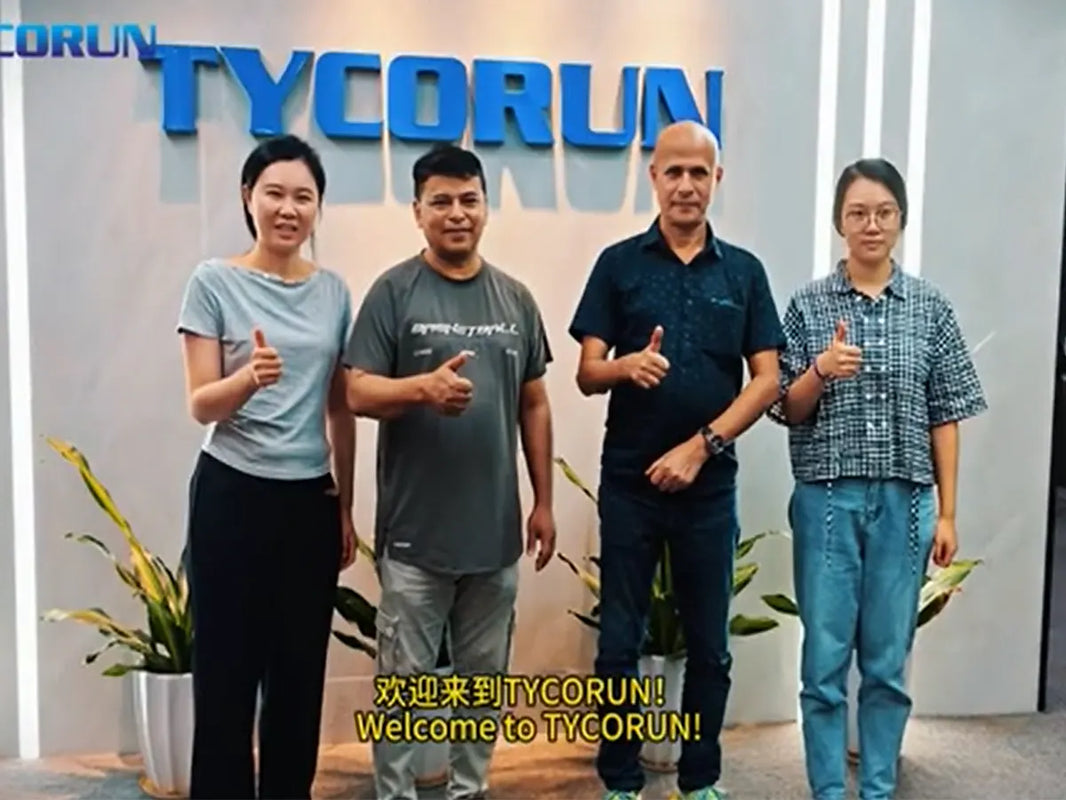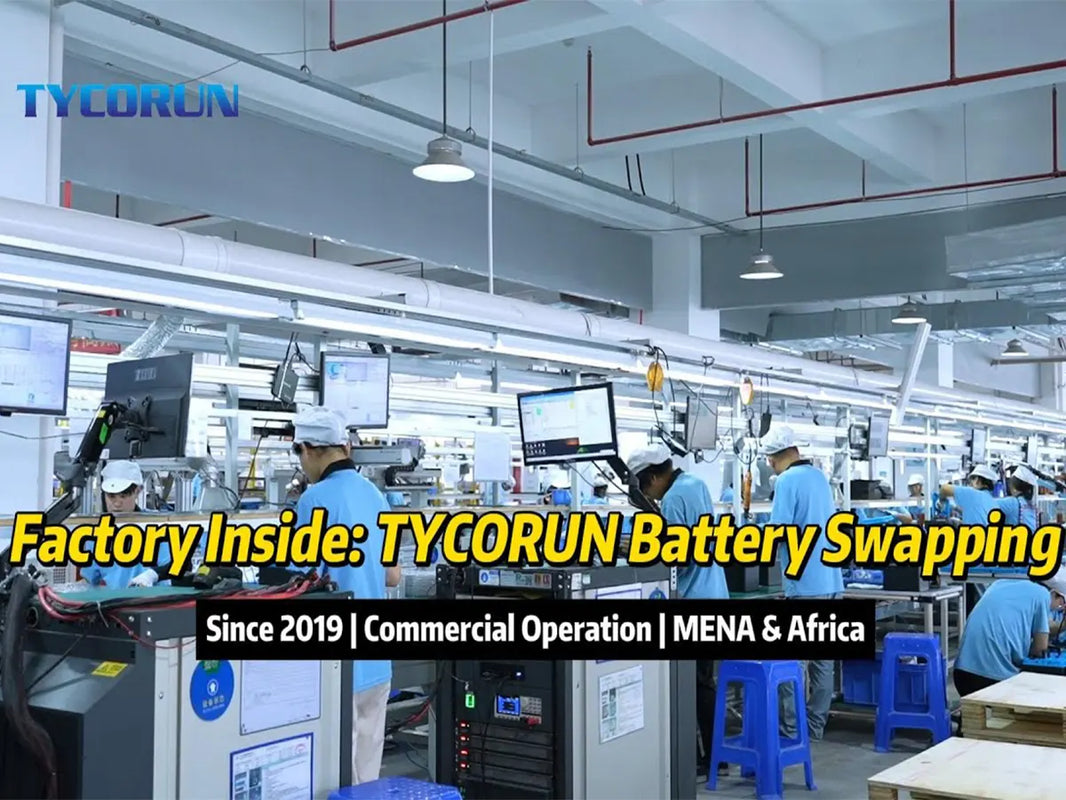
Main content:
- Why Are So Many Companies So Keen on Developing Solid-State Batteries?
- How Do Solid State Batteries Work
- Advantages of Solid-State Batteries: Breakthroughs Driven by Chemical Changes
- Semi-Solid and All-Solid-State Battery Technology Routes
- Solid-State Electrolyte Material Preparation Process
- Conclusion
As the demand for safer, higher-performance energy storage continues to rise, more companies are investing heavily in solid-state battery technology. Understanding how do solid state batteries work is key to understanding why they’re viewed as the next major leap in battery innovation. By replacing flammable liquid electrolytes with solid materials, they promise higher energy density, faster charging, and improved car battery safety.
Why Are So Many Companies So Keen on Developing Solid-State Batteries?

Energy Density Bottleneck
The energy density of traditional lithium-ion batteries is limited by an invisible "ceiling." From the perspective of chemical composition, the positive electrode materials of traditional lithium batteries are mostly lithium cobalt oxide(lithium cobalt oxide battery), lithium iron phosphate or ternary materials (lithium nickel cobalt manganese oxide or lithium nickel cobalt aluminum oxide), and the negative electrode is generally graphite.
During the charging and discharging process, lithium ions shuttle back and forth between the positive and negative electrodes to achieve the mutual conversion of electrical energy and chemical energy. The working principle of ternary lithium batteries is to take the lithium battery composed of a common graphite negative electrode and a lithium cobalt oxide positive electrode as an example. The theoretical specific capacity of graphite is about 372 mAh/g, and the theoretical specific capacity of lithium cobalt oxide is about 274 mAh/g.
When the battery is working, lithium ions are released from the positive electrode, pass through the electrolyte, and are embedded in the graphite layer of the negative electrode. However, the energy density of this material system is limited. The energy density of currently commercialized traditional lithium batteries mostly hovers between 100 and 260Wh/kg. As people's requirements for the range of electric vehicles become higher and higher, the energy density of traditional lithium batteries is becoming increasingly insufficient.
For example, a 50kWh lithium battery pack with an energy density of 150Wh/kg might have a theoretical range of just over 300 kilometers. In actual driving, factors such as road conditions, driving habits, and ambient temperature must also be considered to influence battery performance, resulting in a significant reduction in actual range, leading to range anxiety among vehicle owners.
Safety Hazards
News reports of escalating escalating escalator fires frequently surface, leaving people terrified. The liquid electrolyte used in traditional lithium batteries primarily consists of carbonate organic solvents (such as ethylene carbonate and dimethyl carbonate) and lithium salts (such as lithium hexafluorophosphate). These organic solvents are flammable.
Once a battery experiences thermal runaway and the temperature rises rapidly, the electrolyte can rapidly evaporate and decompose. Mixing with oxygen, it can easily ignite or even explode. For example, at high temperatures, the lithium in the positive electrode material undergoes a violent redox reaction with the electrolyte, generating significant heat. If this heat is not dissipated promptly, it further exacerbates the internal battery reactions, creating a vicious cycle. Excessive lithium ion intercalation can also lead to the formation of lithium dendrites on the negative electrode surface.
Charging Speed Constraints
"Charge for two hours, drive for ten minutes"—although a slightly exaggerated joke—reflects the reality of the slow charging speed of traditional electric vehicles. From a chemical perspective, the charging speed of traditional electric vehicles is primarily limited by the ion conduction rate and the reaction rate of the electrode materials.
During the charging process, lithium ions must pass from the positive electrode through the electrolyte, across the separator, and then intercalate into the negative electrode.
During this process, the relatively slow conduction rate of lithium ions in the electrolyte becomes a major bottleneck in charging speed. Factors such as the viscosity and ion concentration of the electrolyte affect lithium ion conduction. For example, at low temperatures, the electrolyte viscosity increases, making lithium ion movement more difficult and significantly reducing charging speed. The reaction rate of the electrode material is also crucial.
When lithium ions intercalate into the negative electrode, the negative electrode material must quickly accept these ions and maintain structural stability. However, the currently commonly used graphite negative electrode material has a limited lithium ion intercalation rate during fast charging, which can easily lead to excessive lithium ion concentrations on the negative electrode surface, causing problems such as lithium plating.
Lithium deposition not only reduces battery capacity but can also create lithium dendrites, posing safety risks and hindering rapid charging speed increases. Traditional electric vehicles often take hours to charge, limiting their widespread adoption compared to gasoline-powered vehicles that can continue driving in just minutes.

How Do Solid State Batteries Work
Working Principle of Solid-State Batteries
To understand how do solid state batteries work, it’s essential to look at their fundamental mechanism. Like traditional batteries, solid-state batteries rely on reversible lithium-ion movement between cathode and anode, but instead of a liquid electrolyte, they use a solid electrolyte. This structural change alters the ion transport mechanism and improves performance.
Charging Process
When a solid-state battery is connected to an external charging power source, the electric field drives lithium ions in the positive electrode material to break free from their lattice structure and migrate as ions through the solid electrolyte toward the negative electrode.
Simultaneously, electrons flow from the positive electrode through an external circuit to the negative electrode, maintaining charge balance across the entire circuit. On the negative electrode surface, lithium ions receive electrons transferred from the external circuit and become embedded in the negative electrode material's lattice, where they are stored.
Discharge Process
When a solid-state battery is connected to a load (such as the motor of an electric vehicle), it begins discharging. During this process, lithium ions in the negative electrode are released from their crystal lattice and migrate again through the solid electrolyte toward the positive electrode. Electrons then flow from the negative electrode through an external circuit to the positive electrode, providing energy to the load.
On the surface of the positive electrode, the migrated lithium ions combine with electrons flowing from the external circuit and are reinserted into the crystal lattice of the positive electrode material. The entire charge and discharge process can be simply understood as the process of lithium ions migrating back and forth between the positive and negative electrodes through the solid electrolyte under the influence of an electric field, accompanied by the directional movement of electrons in the external circuit, thereby achieving the mutual conversion of electrical energy into chemical energy.
Ionic Conductivity Mechanism of Solid-State Electrolytes
The ionic conduction mechanism is a key factor in how do solid state batteries work effectively. Different types of solid-state electrolytes have different ionic conduction mechanisms:
Oxide electrolyte
Feature a 3D network structure that allows lithium ions to move through structural voids. They offer high ionic conductivity and excellent stability.
Sulfide electrolytes
Have more open structures and shorter ion migration paths, resulting in high conductivity comparable to or even exceeding that of liquid electrolytes.
Polymer electrolytes
Rely on segmental polymer chain motion to conduct ions. Conductivity is lower at room temperature, so plasticizers or fillers are often added to enhance performance.
Notably, the ionic conductivity of solid-state electrolytes is generally lower than that of liquid electrolytes (except for sulfide-based electrolytes), which is one of the major challenges facing current solid-state battery technology. To address this issue, researchers are developing various new electrolyte materials and improving preparation processes.
Advantages of Solid-State Batteries: Breakthroughs Driven by Chemical Changes
Leaps in Energy Density
A critical part of how do solid state batteries work is their ability to support high-voltage cathode materials. Solid electrolytes have a wider electrochemical window (up to 5 V) than liquid ones (3–4 V), enabling higher energy density.
The electrochemical window of solid electrolytes can be increased to 5V, which is compatible with high-voltage positive electrode materials, thereby improving the energy density of the battery.
From a structural perspective, solid electrolytes combine the functions of electrolytes and diaphragms. If a lithium metal negative electrode is used, the distance between the electrodes will be greatly shortened. Single cells can be stacked in series and densely stacked to achieve a boosting effect, thereby improving manufacturing efficiency, reducing package size, and increasing volume energy density.
Moreover, due to the excellent heat resistance of solid electrolytes, solid-state batteries reduce the need for system thermal management, further reducing the weight of the system and improving energy density. Data can most intuitively reflect this advantage.
The energy density of commercial traditional lithium batteries is mostly between 100~260Wh/kg, while the energy density of solid-state batteries, some laboratory samples have exceeded 600Wh/kg[9], and some companies even claim to have reached more than 700Wh/kg.
This significant increase in energy density means that electric vehicles equipped with solid-state batteries will have a significantly increased range, potentially exceeding 1,000 kilometers, completely alleviating range anxiety for drivers.
Substantial Safety Improvement
Safety is another key advantage of solid-state batteries, which is closely related to the chemical properties of the solid-state electrolyte. The liquid electrolyte in traditional lithium batteries is flammable, a key factor in thermal runaway. Solid-state electrolytes, on the other hand, are inherently non-flammable, heat-resistant, non-corrosive, and non-volatile, fundamentally eliminating the risk of electrolyte leakage and combustion. Solid-state electrolytes offer superior thermal and chemical stability.
At high temperatures, traditional liquid electrolytes are prone to decomposition, generating gas and increasing pressure within the battery. Excessive pressure can cause the battery casing to rupture, leading to dangerous situations such as combustion or explosion.
Solid-state electrolytes, on the other hand, are less susceptible to side reactions at high temperatures, maintaining a relatively stable structure and performance. They are unlikely to decompose or trigger dangerous chemical reactions due to elevated temperatures.
Even in high-temperature environments, the risk of battery safety incidents is significantly reduced. Solid-state electrolytes also effectively inhibit the growth of lithium dendrites. During the charge and discharge process of traditional lithium batteries, lithium metal deposits unevenly on the negative electrode surface, easily forming lithium dendrites.
These dendrites can gradually grow and pierce the separator, causing a short circuit between the positive and negative electrodes and triggering thermal runaway.
Solid-state electrolytes, with their high mechanical strength and chemical stability, effectively prevent the growth of lithium dendrites. When lithium dendrites attempt to grow, the solid electrolyte mechanically blocks them, making it difficult for them to penetrate, thus preventing short circuits and significantly improving battery safety.
Faster Charging Speeds
Solid-state batteries also demonstrate significant advantages in charging speed, stemming from optimized internal ion conduction pathways and altered chemical mechanisms. In traditional lithium batteries, the relatively slow conduction rate of lithium ions in liquid electrolytes is one of the key factors limiting charging speed. Solid-state batteries, however, utilize solid electrolytes, whose ion conduction mechanisms differ from those of liquid electrolytes.
The ionic conductivity of some sulfide solid electrolytes approaches that of liquid electrolytes, and in some cases even exceeds it. This allows for faster lithium ion migration within the solid electrolyte. Solid-state batteries also optimize the interface design between electrode materials and solid electrolytes.
This improves interfacial contact and reduces interfacial resistance. When the interfacial contact between the electrode material and the solid electrolyte is good, the resistance to lithium ion migration at the interface is reduced, enabling smoother migration from the positive electrode to the negative electrode.
Semi-Solid and All-Solid-State Battery Technology Routes

Semi-Solid-State Batteries Technology Route
Semi-solid-state batteries, also known as hybrid solid-liquid batteries, are a transitional technology solution based on traditional liquid batteries with a partial solid electrolyte. Their key feature is the retention of a portion of liquid electrolyte to improve interfacial contact between the electrode and electrolyte, enhancing ion conduction efficiency.
Currently, semi-solid-state batteries have begun commercial application in electric vehicles. Depending on the electrolyte material, semi-solid-state batteries are primarily categorized into the following technology routes:
Oxide + Polymer Hybrid Electrolyte Route
Represented by Weilan New Energy and Qingtao Energy, these utilize a hybrid electrolyte of oxides and polymers, combining the high ionic conductivity of oxides with the good interfacial contact properties of polymers.
Sulfide Electrolyte Route
Represented by CATL and Guoxuan High-Tech, these utilize sulfide solid electrolytes, which offer high ionic conductivity and good processing properties.
Halide Electrolyte Route
Represented by EVE Energy, this technology utilizes halide solid electrolytes, offering a wide electrochemical window and excellent thermal stability.
All-Solid-State Battery Technology Route
All-solid-state batteries refer to battery technologies that utilize a complete solid-state electrolyte and are the ultimate form of solid-state batteries. Based on the electrolyte material, all-solid-state batteries are primarily categorized into the following technology routes:
Oxide Solid-State Battery Route
Represented by ProLogium Technology, this technology utilizes oxide solid state electrolyte, offering high electrochemical stability and safety, but requiring high-temperature sintering and making processing difficult.
Sulfide Solid-State Battery Route
Represented by Toyota, Panasonic, and CATL, this technology utilizes sulfide solid electrolytes, boasting ionic conductivity approaching that of liquid electrolytes. It is currently the most promising technology route for achieving high energy density and ultra-fast charging.
Polymer Solid-State Battery Route
Represented by France's Bolloré, this technology utilizes polymer solid electrolytes, offering excellent flexibility and processability, but with low room-temperature ionic conductivity.
Composite solid-state battery approaches combine the advantages of multiple electrolyte materials, such as oxide + polymer + halide composite electrolytes, to comprehensively address issues such as ionic conductivity, interfacial stability, and processability.
Solid-State Electrolyte Material Preparation Process
Solid-state electrolytes are core components of solid-state batteries, and their preparation process directly impacts battery performance. Different types of solid-state electrolytes require different preparation methods:
Preparation of Oxide Solid-State Electrolytes
Oxide solid-state electrolytes are typically prepared using high-temperature sintering. Taking LLZO (lithium lanthanum zirconium oxide) as an example, the preparation process includes raw material mixing, pre-calcining, ball milling, molding, and high-temperature sintering.
Specifically, lithium salt, lanthanum salt, and zirconium salt are first mixed in a specific proportion, then pre-calcined at high temperature to form a precursor. Ball milling is then used to refine the particles, followed by pressing and molding. Finally, sintering at an even higher temperature forms a dense oxide electrolyte ceramic.
Preparation of Sulfide Solid-State Electrolytes
Sulfide solid-state electrolytes are prepared using a variety of methods, including mechanical ball milling, solution processing, and melt quenching. Taking LGPS (lithium germanium phosphorus sulfur) as an example, the mechanical ball milling method involves mixing raw materials such as Li₂S, GeS₂, and P₂S₅ in a specific proportion and then subjecting them to prolonged ball milling under an inert atmosphere to directly produce a sulfide electrolyte powder.
The solution method involves dissolving the raw materials in an organic solvent, allowing a solution reaction to form a precursor, which is then dried and heat-treated to obtain the target product. The melt-quenching method involves melting the raw materials at high temperatures and then rapidly cooling them to produce an amorphous or microcrystalline sulfide electrolyte.
Polymer Solid Electrolyte Preparation
Polymer solid electrolytes are primarily prepared using solution casting and in-situ polymerization. The solution casting method involves dissolving a polymer (such as PEO), a lithium salt, and additives in an organic solvent to form a homogeneous solution.
The solution is then poured into a mold, where the solvent evaporates to form a polymer electrolyte membrane. The in-situ polymerization method involves mixing monomers, an initiator, and a lithium salt, initiating a polymerization reaction under specific conditions, and directly forming a polymer electrolyte.
Composite Solid-State Electrolyte Preparation
To combine the advantages of different electrolyte types(lithium ion battery electrolyte), researchers have developed a variety of composite solid-state electrolytes. Common preparation methods include blending, in-situ generation, and interface modification.
For example, blending oxide nanoparticles with polymer electrolytes can improve the ionic conductivity and mechanical strength of polymer electrolytes. In-situ generation, forming a stable interface layer on the electrode surface, can improve the interfacial contact between the electrode and the electrolyte.
Conclusion
Learning how do solid-state batteries work reveals why industries—from electric vehicles to grid storage—see them as a game-changer. Their unique solid electrolyte structure not only boosts energy density and charging speed but also enhances stability and safety. With continuous R&D breakthroughs, solid-state batteries are expected to redefine the future of energy storage technology.
Related articles: battery materials, top 5 solid state battery manufacturers, solid state batteries vs lithium ion















